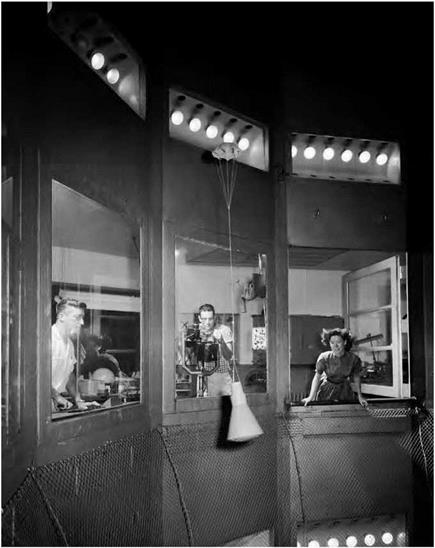Safe Return: Space Capsules
The selection of blunt capsule designs for the Mercury, Gemini, and Apollo programs resulted in numerous investigations of the dynamic stability and recovery of such shapes. Nonlinear, unstable variations of aerodynamic forces and moments with angle of attack and sideslip were known to exist for these configurations, and extensive conventional force tests, dynamic free-flight model tests, and analytical studies were conducted to define the nature of potential problems that might be encountered during atmospheric reentry. At Ames, the supersonic and hypersonic free-flight aerodynamic facilities have been used to observe dynamic stability characteristics, extract aerodynamic data from flight tests, provide stabilizing concepts, and develop mathematical models for flight simulation at hypersonic and supersonic speeds.
Meanwhile, at Langley, researchers in the Spin Tunnel were conducting dynamic stability investigations of the Mercury, Gemini, and Apollo capsules in vertically descending subsonic flight.[492]
Results of these studies dramatically illustrated potential dynamic stability issues during the spacecraft recovery procedure. For example, the Gemini capsule model was very unstable; it would at various times oscillate, tumble, or spin about a vertical axis with its symmetrical axis tilted as much as 90 degrees from the vertical. However, the deployment of a drogue parachute during any spinning or tumbling motions quickly terminated these unstable motions at subsonic speeds. Extensive tests of various drogue-parachute configurations resulted in definitions of acceptable parachute bridle-line lengths and attachment points. Spin Tunnel results for the Apollo command module configuration were even more dramatic. The Apollo capsule with blunt end forward was dynamically unstable and displayed violent gyrations, including large oscillations, tumbling, and spinning motions. With the apex end forward, the capsule was dynamically stable and would trim at an angle of attack of about 40 degrees and glide in large circles. Once again, the use of a drogue parachute stabilized the capsule, and the researchers also found that retention of the launch escape system, with either a drogue parachute or canard surfaces attached to it, would prevent an unacceptable apex-forward trim condition during launch abort.
Following the Apollo program, NASA conducted a considerable effort on unpiloted space probes and planetary exploration. In the Langley Spin Tunnel, several planetary-entry capsule configurations were tested to evaluate their dynamic stability during descent, with a priority in simulating descent in the Martian atmosphere.[493] Studies also included assessments of the Pioneer Venus probe in the 1970s. These tests provided considerable design information on the dynamic stability of a variety of potential planetary exploration capsule shapes. Additional studies
|
Photograph of a free-flight model of the Project Mercury capsule in vertical descent in the Spin Tunnel with drogue parachute deployed. Tests to improve the dynamic stability characteristics of capsules have continued to this day. NASA. |
of the stability characteristics of blunt, large-angle capsules were conducted in the late 1990s in the Spin Tunnel.
As the new millennium began, NASA’s interests in piloted and unpiloted planetary exploration resulted in additional studies of dynamic stability in the Spin Tunnel. Currently, the tunnel and its dynamic model testing techniques are supporting NASA’s Constellation program for
lunar exploration. Included in the dynamic stability testing are the Orion launch abort vehicle, the crew module, and alternate launch abort systems.[494]











